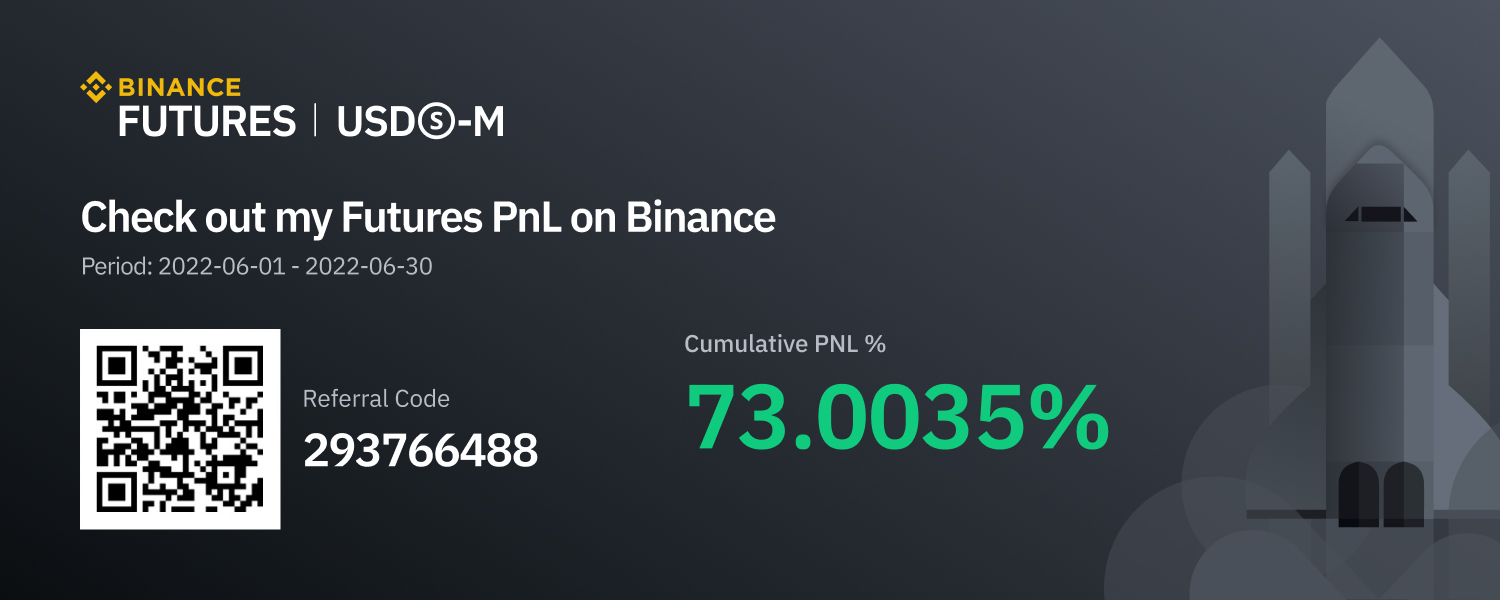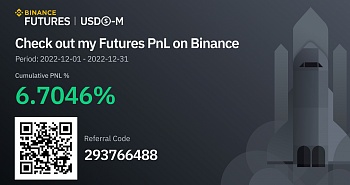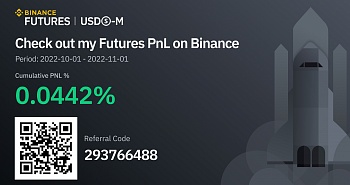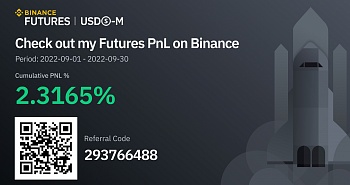Hello! I am the leading algotrader of the AKRA Futures robots’ project, Alexander Glebov. The algorithmic cryptocurrency trading service on the Binance exchange has been successfully tested on real trading accounts; in June 2022, cryptobots showed a cumulative PNL of 73,0035%. Of course, not every algorithm has shown positive results, but it is norm for exchange trade. Even traders often have bad days and weeks, and AKRA Futures robots are the same traders, but in addition, they have artificial intelligence, analyze the situation and place orders much faster.
My team of algorithmic traders and I have prepared a monthly efficiency report for each AKRA Futures robots trading robot on Binance with an analysis of the advantages and disadvantages of the algorithms. You can see the transparency of cryptocurrency trading with our bots and their high efficiency.
How do our robots trade?
We used 11 robots to trade cryptocurrency on the Binance exchange. Each robot trades one pair within the algorithm set by the algotraders. The main advantage of such trading is risk diversification: if one of the robots falls into negative territory, drawdown of the trading deposit will be compensated by the income of other robots. This fact radically distinguishes the AKRA Futures robots service from other trading advisors and robots, who work in solo mode for one trader. Now I'll tell you how it looks in practice.
Robot AAVEUSDT
The total profit of this robot was 32.51200001 USDT for all transactions in June although there were 14 negative orders. The maximum profit was recorded on June 18 and 23 on a swing, when the exchange rate of the cryptocurrency pair changed by more than 5%. The maximum loss was on June 1, it was fixed on a deal opened at the end of last month.
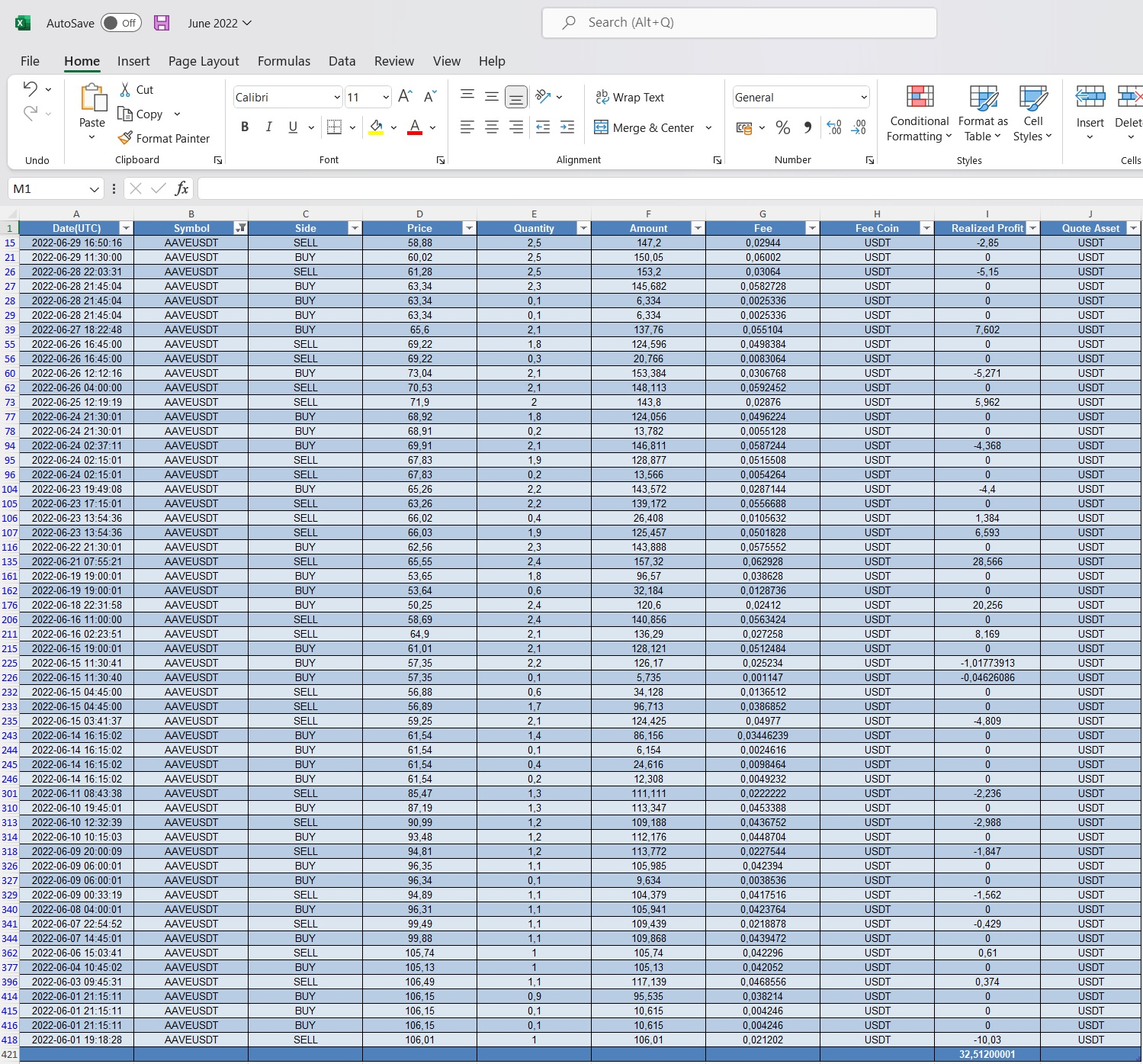
RESULT: The AAVEUSDT bot has worked perfectly this month, its profitability indicator has approached the level of an experienced trader who has been trading on the Binance exchange since its foundation.
Robot ADAUSDT
This robot did not trade very intensively in June, but it made a profit of 15.6912 USDT. During the trading period, bot entered into 10 unsuccessful deals. All of them were covered by five successful orders placed both for a decrease and an increase in the price of the asset.

RESULT: the robot got a plus, and it's great. A small number of trades were made during the month, as volatility was high, and trends changed from bullish to bearish. Bots do not take risks in such market conditions.
Robot ALGOUSDT
This algorithm has shown itself not at its best: total month loss was 9.55855 USDT. That's because high volatility periods make intraday trading difficult. The bot made one successful transaction, which gave more than 22 USDT profit, but it was not enough to correct negative orders.
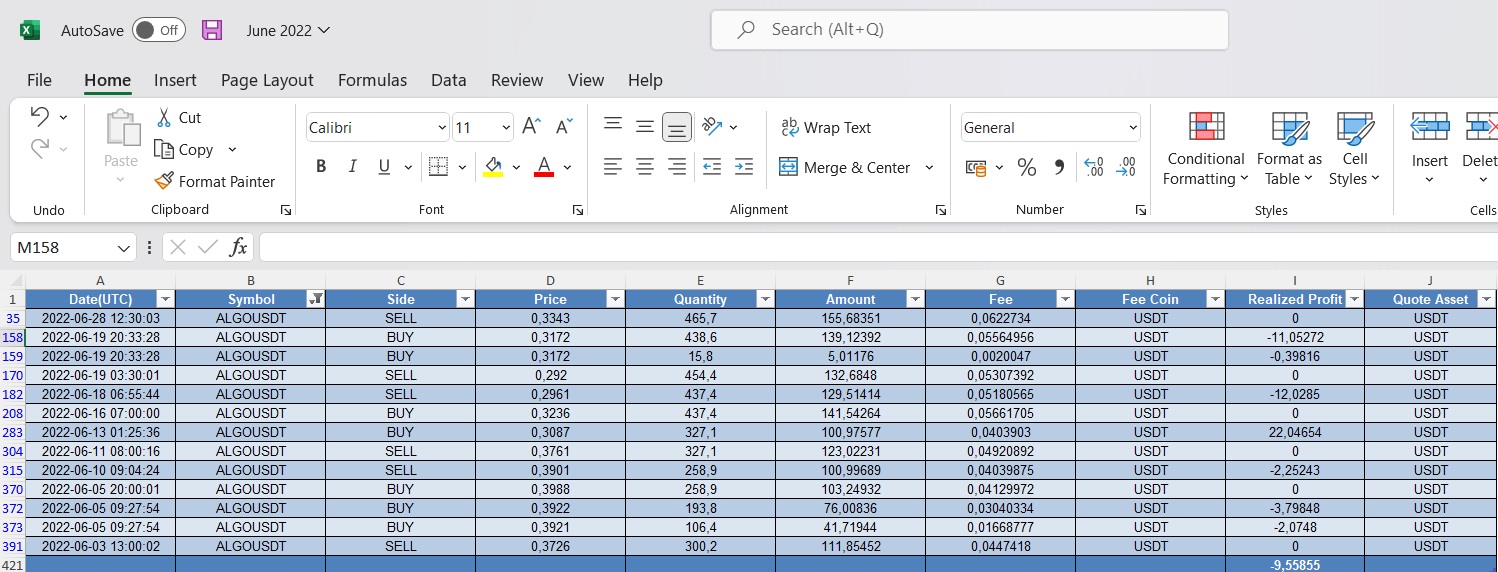
RESULT: ALGOUSDT has not studied the market well enough yet and it cannot work during periods of high asset volatility. The robot will learn over time and be able to identify more patterns, because it remembers all its mistakes and achievements.
Robot ALICEUSDT
This cryptobot showed an average profit of 5.40120002 USDT. Not every rookie trader on Binance can show such result in a month. There were three major setbacks at the end of the month, the reason for these failures is the price reversal.
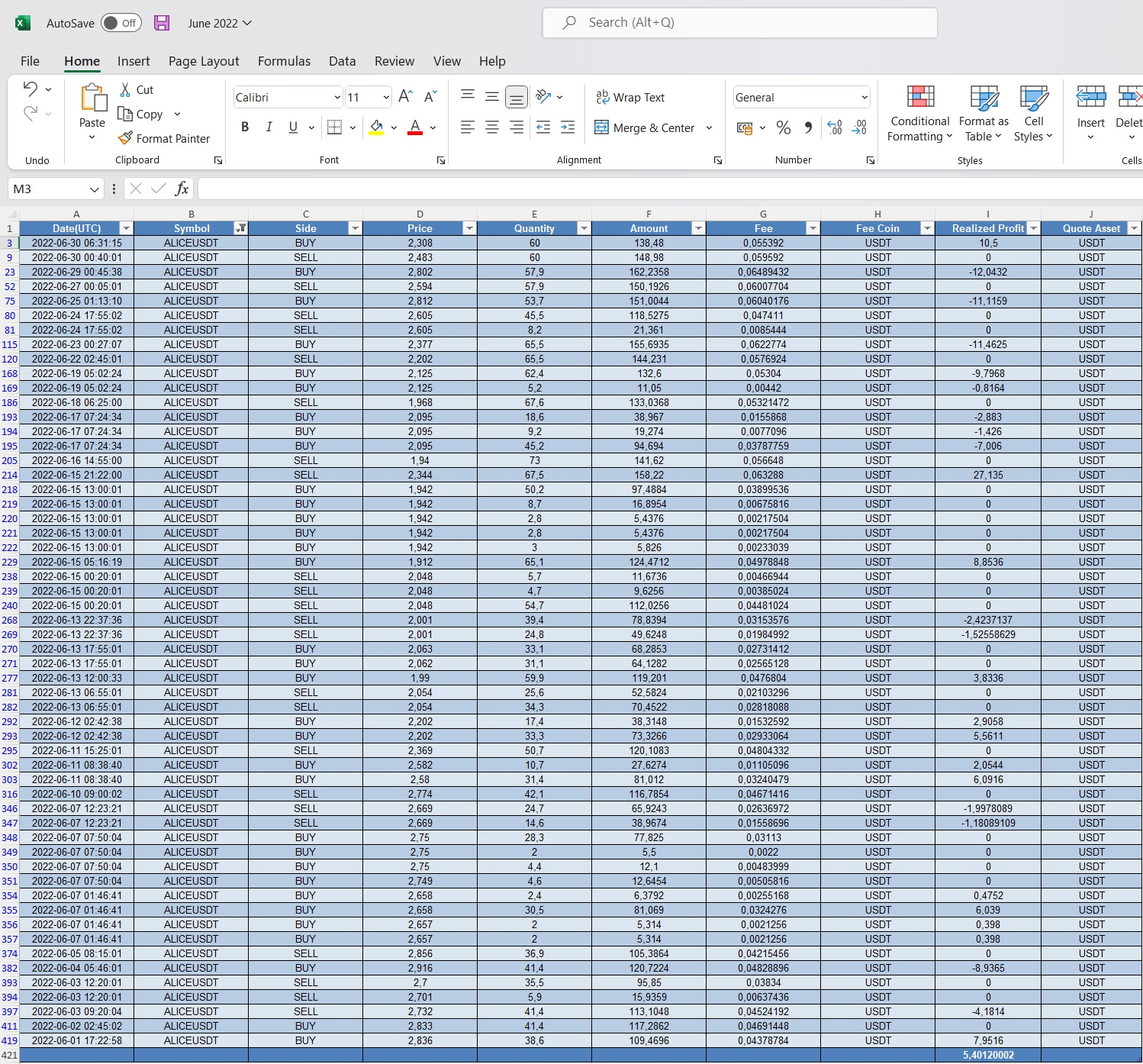
RESULT: robot ALICEUSDT was profitable, reached the level of a medium skilled trader, and this is quite good.
Robot ATAUSDT
In June, the total profit of the ATAUSDT reached 12.9141 USDT, all this is due to two powerful deals at the beginning and in the third decade of the month. These trades offset 17 failed orders, most of which were in flat periods.

RESULT: ATAUSDT has been well optimized for short trading in conditions of high asset volatility, but it still does not have enough data to form patterns during flat periods. But the trading robot is constantly self-learning, and soon it will be able to determine the flat and use it in trading.
Robot AVAXUSDT
In June, this bot had a bad result: there were only three trades, and one of them recorded 11.6 USDT losses. A losing order was entered at the beginning of the month, and then nothing like this happened. This means that the robot took into account the error, started ignoring similar patterns, and this is a good result. Now we have to wait for the robot to learn how to find successful figures on the chart.

RESULT: June was a bad month for AVAXUSDT, although there was no excessive volatility of the crypto pair. The small number of trades indicates that the bot did not recognize any of the patterns that appeared on the chart.
Robot AXSUSDT
The bot showed average results in June, the profit was 4.15 USDT. In fact, the bot had only one negative and one positive transaction per month. The positive trade covered the losses and Binance's commission for holding open orders.

RESULT: the weak cryptobot's activity indicates the shortcomings of technical analysis — the robot could not find the right entry point into the market. But the positive trade during the correction after the sharp fall shows that the bot was able to adapt to the drastic changes in the market.
Robot DOGEUSDT
Dogecoin is a popular currency among crypto traders on Binance and other exchanges, and we also chose it. The result was good: the total monthly profit was 9.99683002 USDT. Transactions took place with varying success, but even a noticeable drawdown in the middle of the month did not bring down the settings of our bot: it was able to quickly rebuild the algorithm and hit the jackpot on the fall of the trend.

RESULT: DOGEUSDT has been actively trading for a month and, in general, it worked well. Of course, he still needs to learn, especially with lingering bears and bulls, but it takes time.
Robot NEARUSDT
This cryptobot delivered a yield of 14,085 USDT. There were dangerous moments during the trade: the bot got rekt twice. But the bot worked perfectly and entered into several profitable orders during the stabilization period and with a stable bearish trend.

RESULT: NEARUSDT showed its best side and was even able to adapt to the new cryptocurrency exchange rate.
Robot RUNEUSDT
This bot is definitely the best in June. Its profitability is 46,843 USDT, and it was provided by a series of successful transactions in the second half of the month. The cryptobot concluded profitable orders at BullRun, that is, it was able to quickly adapt to new market conditions and turned them to his advantage. This fact indicates its excellent optimization.
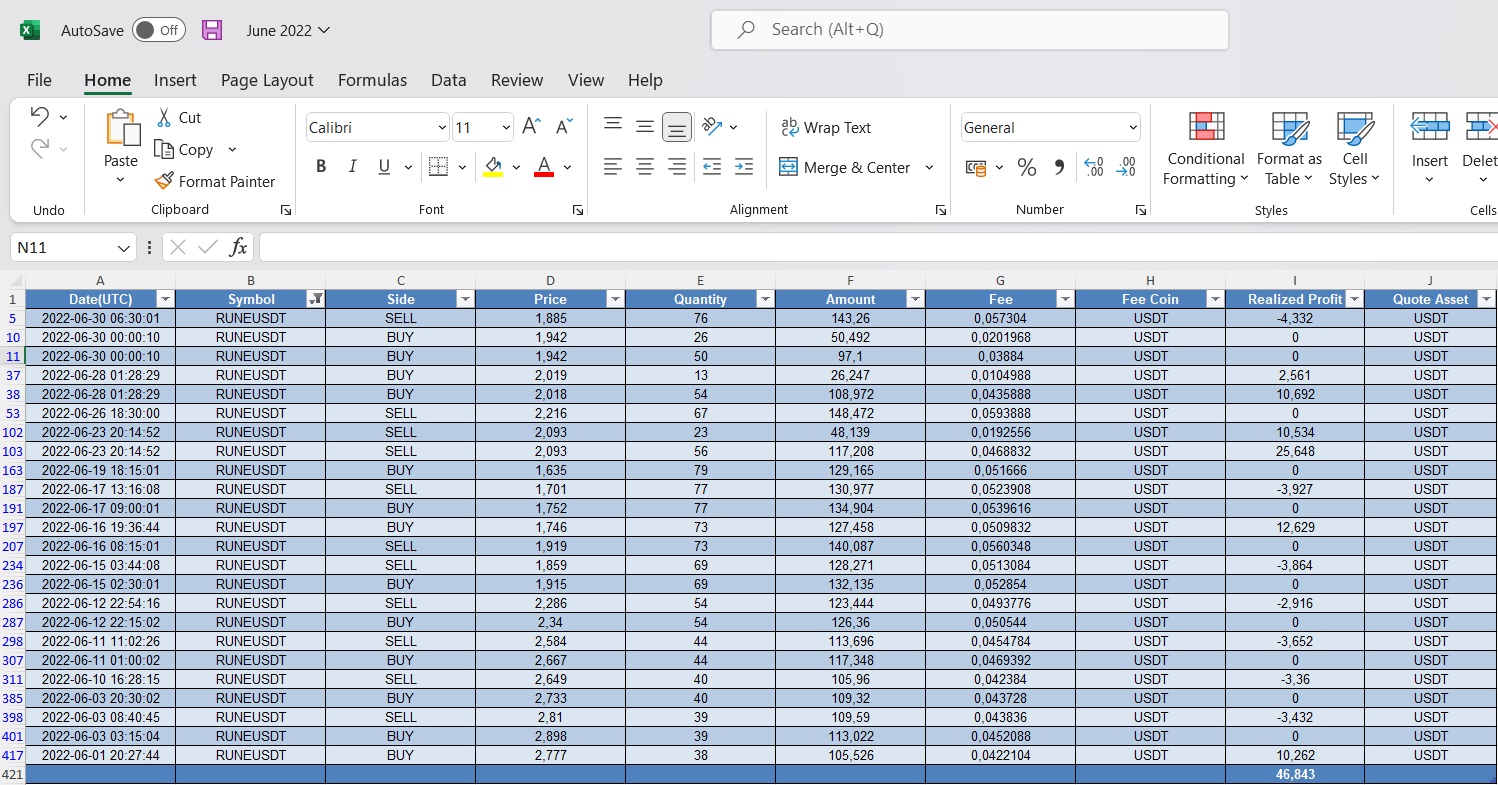
RESULT: RUNEUSDT, with small monthly trading volumes, provided the maximum profit in just 6 transactions.
Robot XLMUSDT
This robot reached a total profit of 6.80787001 USDT in June. However, two successful transactions were only in the middle of the month, then, when the rate of the cryptocurrency pair grew, the bot merged one transaction after another. This happened with a steady bullish trend and a slight sideways movement, so forecast errors are easy to explain - the bot has little historical data to identify the optimal entry point.
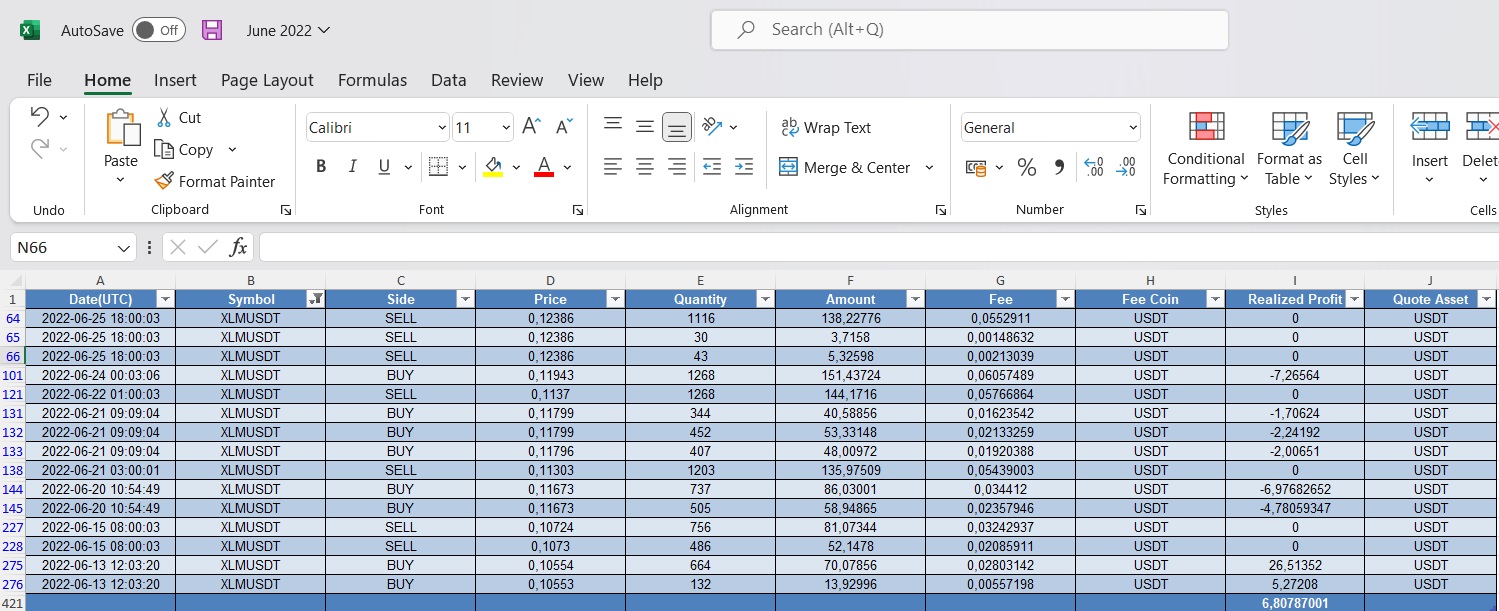
RESULT: it is necessary to analyze XLMUSDT, bot determines patterns incorrectly. Sometimes cryptocurrency rates draw new figures on the chart that the bot has not seen before, and it makes technical analysis difficult.
Conclusions
The June results of the AKRA Futures robots work are not a benchmark; in other months, the profit may be lower. In any case, it is due to teamwork that the profit will be higher than the income on deposits.
Do not be too strict about robot errors, as even very experienced traders make mistakes. While robots do not know all existing patterns, they need some time to learn. It is important to note that our robots are self-learning, as they learn from their mistakes in the trading process. We can stop the bot only in critical situations, if it is clear that its optimization is insufficient, or the current market conditions do not fit into the patterns.
If the trading robot could not be trained and cannot be optimized, then we delete it. I will definitely tell you later how we do it and why.
